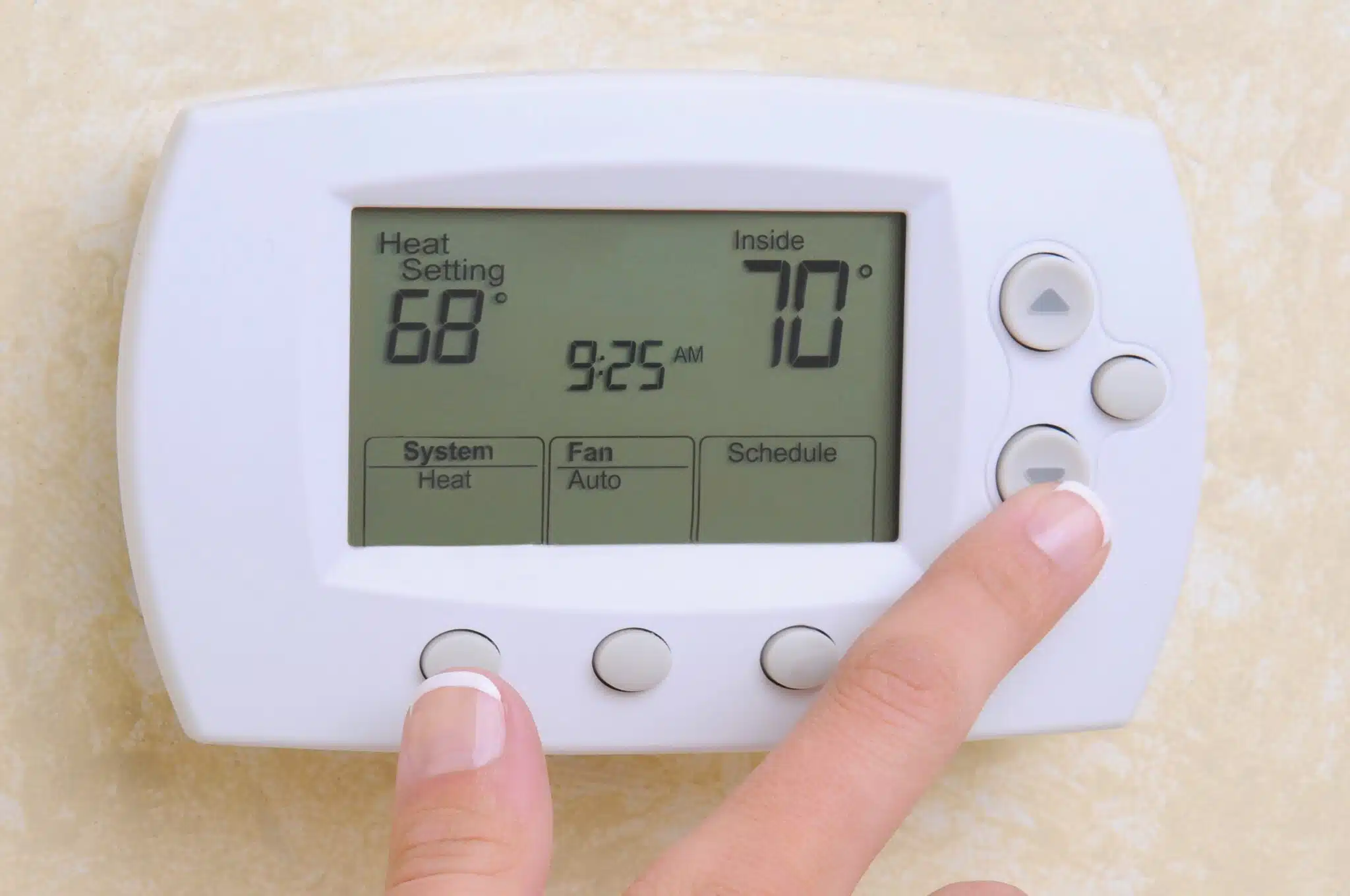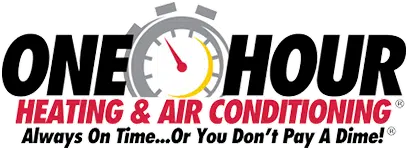Experiencing issues with your heating and cooling system can often be traced back to a faulty thermostat. This common problem can lead to inconsistent temperatures in your home, frequent cycling of your HVAC unit, or even a complete system shutdown. Residents of Lancaster, PA, and surrounding areas like Harrisburg and York, understand the importance of a reliable thermostat to maintain comfort throughout the seasons. Identifying and addressing issues with your thermostat promptly can save you from discomfort and prevent costly repairs.
A faulty thermostat might not always be obvious. Some signs include the HVAC system not turning on, or the temperature indoors not matching the settings. Before assuming the worst, it’s crucial to check the basics like power sources and settings. Sometimes, the solution can be as simple as replacing the batteries or ensuring the device is set correctly.
However, if basic troubleshooting doesn’t resolve the issue, further investigation into sensor accuracy and calibration might be necessary. A thermostat that doesn’t accurately read or respond to your home’s temperature can lead to significant energy waste and discomfort. This is where professional advice from a company like One Hour Heating & Air Conditioning becomes invaluable.
For those in Lancaster, PA, and nearby areas, understanding how to diagnose and fix a faulty thermostat is crucial for maintaining an efficient home environment. Whether it’s recalibrating the device or upgrading to a smart thermostat, taking timely action ensures your living space remains comfortable and energy-efficient year-round. This introduction sets the stage for deeper insights into diagnosing specific issues with your thermostat and the steps you can take to resolve them effectively.
Common Symptoms of a Faulty Thermostat
Recognizing the common symptoms of a faulty thermostat is the first step toward ensuring your HVAC system functions optimally. One clear indicator is the inability of the thermostat to maintain set temperatures, which can cause discomfort in your Harrisburg home. Additionally, you might notice that the HVAC system frequently turns on and off, a process known as short cycling. This not only disrupts the comfort levels but can also strain your system, leading to potential failures.
Another symptom to watch for is a complete lack of response from the thermostat. If adjustments to the temperature settings yield no change in your home’s climate, it’s likely that the thermostat is not communicating effectively with the HVAC system. This could be due to wiring issues or a breakdown in the thermostat’s internal components. Residents in York, PA, experiencing these issues should consider consulting a professional to diagnose the problem accurately.
Temperature discrepancies between different rooms can also suggest a problem with your thermostat. If certain areas in your home are significantly warmer or cooler than others, despite what the thermostat reads, it may be misreading the actual ambient temperature. This misreading can lead to inefficient heating or cooling, forcing your system to work harder and increasing your energy usage.
Lastly, an unexplained increase in your energy bills can often point to a faulty thermostat. If your system is running longer than necessary due to incorrect temperature readings or frequent cycling, you’ll likely see a spike in your utility costs. Recognizing these symptoms early can save you from more severe complications with your HVAC system, ensuring that your home remains a comfortable sanctuary throughout the changing seasons.
Checking the Power Source and Battery Health
When diagnosing a faulty thermostat, it’s essential to begin by checking the power source and the health of the batteries. A common issue for many homeowners in Harrisburg, PA, is finding that their thermostat isn’t powered correctly, which can mimic the symptoms of a more serious problem. Ensure that the device is connected to a working power outlet or, if it’s battery-operated, check that the batteries are not depleted. This simple step can often resolve what may initially appear as a malfunction.
If after checking the power source your thermostat still exhibits issues, it’s time to inspect the batteries more closely. Even if the display is active, weak batteries can cause irregular operation and affect the thermostat’s functionality. Replacing old batteries with new, high-quality ones can restore normal operation and is an easy fix that should not be overlooked. This is a particularly useful tip for residents in York, PA, where temperature fluctuations demand consistent thermostat performance.
Moreover, it’s crucial to ensure that the power connections to your thermostat are secure and not damaged. Loose wiring or corroded terminals can interrupt the power flow and contribute to the symptoms of a faulty thermostat. A visual inspection can reveal if any wires need to be tightened or replaced. For those uncomfortable with handling electrical components, contacting a professional from a trusted service like One Hour Heating & Air Conditioning is advisable.
Lastly, while checking the power source and battery health, it’s also a good opportunity to ensure that no external factors are influencing the thermostat’s readings. Make sure the thermostat is not placed near heat sources like lamps or in direct sunlight, as these can cause false readings and erratic HVAC behavior. By ensuring your thermostat is correctly powered and accurately positioned, you can enhance its efficiency and reliability, keeping your home comfortable throughout the seasons.

Understanding Thermostat Settings and Adjustments
Understanding the settings and adjustments of your thermostat is pivotal in diagnosing a faulty thermostat. Often, incorrect settings can mimic the symptoms of a malfunctioning unit. For residents of Harrisburg, PA, it’s essential to familiarize yourself with the basic functions of your thermostat. Ensure that it’s set to “heat” during the winter and “cool” during the summer, and that the fan setting is appropriate for your current needs.
Another key aspect is the calibration of the thermostat. Over time, thermostats may start to display inaccurate temperatures, which can significantly affect your home’s comfort and energy efficiency. Recalibrating your thermostat can correct these discrepancies. This process involves adjusting the thermostat to accurately reflect the actual temperature of your home. If you’re unsure how to recalibrate your device, consulting the user manual or contacting a professional service can be very helpful.
In addition to calibration, the programming of your thermostat should be optimized according to your daily schedule. Modern thermostats allow you to set different temperatures for various times of the day. This not only enhances comfort but also helps in reducing energy consumption. For instance, setting a lower temperature when no one is home in York, PA, can lead to significant savings on heating costs during the cold months.
Lastly, it’s crucial to regularly check and clean your thermostat. Dust and debris can accumulate inside the device, which may hinder its performance. A gentle cleaning with a soft brush or compressed air can remove any obstructions and improve the accuracy of your thermostat’s sensors. By maintaining clean and well-adjusted settings, you can ensure that your thermostat functions reliably, keeping your home comfortable throughout the year.
Testing the Thermostat’s Sensor Accuracy
Testing the sensor accuracy of a thermostat is a critical step in diagnosing a faulty thermostat. If your thermostat is not correctly sensing the temperature, it may lead to inconsistent heating or cooling in your home. This can be particularly problematic for residents of Harrisburg, PA, where weather conditions can vary greatly. Start by comparing the temperature reading on your thermostat with a reliable room thermometer placed nearby. A significant discrepancy between these two readings could indicate a sensor issue.
If you find that your thermostat’s sensor is inaccurate, it may require recalibration. This process involves adjusting the thermostat’s internal settings to better align with the actual ambient temperature. For homeowners in York, PA, ensuring that your thermostat is accurately calibrated is essential for maintaining comfort and optimizing energy usage. If recalibration seems daunting or complex, consider seeking assistance from a professional HVAC service.
In some cases, the location of your thermostat can affect its sensor accuracy. Ensure that it is not placed near windows, doors, or heat sources, as these can skew its readings. An improperly located thermostat might pick up false temperature data, causing your HVAC system to cycle improperly. Relocating the thermostat to a more central or appropriate area in your home might resolve these issues without needing further technical intervention.
Lastly, if your thermostat continues to display inaccurate readings despite these checks and adjustments, it might be time to consider a replacement. Modern thermostats, especially smart models, offer more reliable and precise temperature management. Upgrading can not only fix the faulty thermostat issue but also enhance the overall efficiency of your home’s HVAC system. This step can ensure that your living space remains comfortable throughout the changing seasons, providing peace of mind and potentially lowering energy costs.
Steps to Recalibrate Your Faulty Thermostat
Recalibrating a faulty thermostat is a straightforward procedure that can significantly improve the performance of your HVAC system. If you’ve noticed that your thermostat in Harrisburg, PA, isn’t maintaining the correct temperature, recalibration might be necessary. This process adjusts the thermostat to more accurately reflect the actual temperatures in your home, ensuring it triggers the heating or cooling system at the appropriate times.
To start the recalibration process, first consult your thermostat’s user manual. Each model has specific instructions for recalibration, which typically involve entering a settings menu and selecting a recalibration or reset option. This process can help correct any discrepancies between the thermostat’s readings and the true ambient temperature. It’s a crucial step in ensuring that your system isn’t working overtime due to incorrect data from a faulty thermostat.
During recalibration, it might also be helpful to check if the thermostat is level. An unlevel thermostat can misread the actual room temperature, leading to improper heating or cooling cycles. Use a small leveler to check this, adjusting the thermostat’s position if necessary. This is a simple yet effective step to enhance the accuracy of your device.
Finally, after recalibrating, monitor the thermostat’s performance to ensure it is now accurately reflecting the room temperatures and controlling your HVAC system correctly. Residents of York, PA, will find that a properly calibrated thermostat not only maintains comfort but also optimizes energy use. If issues persist after recalibration, it may be time to consult a professional or consider upgrading to a newer, more reliable thermostat model.
When to Replace Your Thermostat Batteries
Knowing when to replace the batteries in your thermostat is crucial for maintaining its functionality and avoiding issues associated with a faulty thermostat. In many cases, weak or dead batteries are the culprits behind erratic HVAC behavior, such as inconsistent temperature control or frequent cycling. For residents of Harrisburg, PA, staying on top of this simple maintenance task can ensure that your heating and cooling systems operate efficiently, especially during extreme weather conditions.
Typically, thermostat batteries should be replaced at least once a year, but this can vary depending on the model and usage. Some thermostats feature a low-battery indicator, which will alert you when the battery power is waning. If your thermostat does not have this feature, it’s wise to proactively change the batteries as part of your regular home maintenance schedule. This preemptive approach can prevent unexpected failures and maintain the comfort levels in your home.
Moreover, if you notice that your thermostat’s display is flickering or the system has started to behave unpredictably, these could be signs that the batteries are nearing the end of their life. In these instances, replacing the batteries might resolve these issues without the need for more extensive repairs. Residents of York, PA, experiencing such symptoms should consider this quick fix before calling in professionals, as it could save time and hassle.
Lastly, while changing the batteries, it’s also a good opportunity to clean the battery compartment and check for any signs of corrosion. Corrosion can interfere with the power supply and contribute to the symptoms of a faulty thermostat. A clean and well-maintained thermostat not only functions better but also extends the lifespan of the device, ensuring it accurately controls your HVAC system and keeps your home comfortable throughout the year.
Upgrading to a Smart Thermostat: Benefits and How-To
Upgrading to a smart thermostat could be a strategic move if you’re dealing with a faulty thermostat. These advanced devices offer enhanced control over your home’s heating and cooling systems, leading to improved energy efficiency and comfort. For homeowners in Harrisburg, PA, a smart thermostat can learn your schedule and adjust temperatures accordingly, which minimizes the energy wasted on heating or cooling an empty house. Moreover, they provide detailed energy usage reports, helping you understand your consumption patterns better.
Another benefit of smart thermostats is their ability to be controlled remotely via a smartphone or tablet. This feature is particularly useful if you’re away from home often and wish to manage your HVAC system on the go. You can adjust the temperature settings before arriving home, ensuring your living space is comfortable the moment you step through the door. Additionally, these devices often receive automatic updates, which improve their functionality and security over time.
For residents of York, PA, considering an upgrade from a faulty thermostat to a smart model, the installation process is straightforward but requires some basic understanding of your HVAC system. It’s often best to consult with a professional HVAC service to ensure the new thermostat is compatible with your existing system. They can handle the installation and provide a quick tutorial on how to use your new device effectively.
Lastly, transitioning to a smart thermostat can be seen as a proactive approach to maintaining an efficient, modern home. These devices not only rectify the issues caused by a faulty thermostat but also adapt to your lifestyle, providing comfort without unnecessary energy expenditure. By investing in this technology, you not only enhance your home’s functionality but also contribute to a more energy-efficient and environmentally friendly world.
Preventing Future Issues with Regular Maintenance
Regular maintenance is key to avoiding the pitfalls of a faulty thermostat and ensuring your HVAC system operates efficiently. By implementing a routine maintenance schedule, homeowners in Harrisburg, PA, can prevent many common thermostat issues before they escalate. This includes regularly checking and cleaning your thermostat, ensuring it’s free from dust and debris which can affect its functionality. Such preventative measures can save you from unexpected malfunctions and maintain optimal indoor comfort.
Another important aspect of preventing a faulty thermostat is to periodically test and recalibrate the device. This ensures that the thermostat accurately reads and responds to the actual temperature of your home. For residents of York, PA, where temperature fluctuations are common, maintaining an accurately calibrated thermostat is essential for energy efficiency and comfort. Recalibration can help your system respond more effectively, reducing unnecessary strain and prolonging the life of your HVAC equipment.
It’s also beneficial to review and adjust the programming settings of your thermostat seasonally. As the seasons change, so do your heating and cooling needs. Adjusting your thermostat to reflect these changes not only enhances comfort but also optimizes energy usage. This proactive adjustment prevents your system from overworking, which can be a direct result of a faulty thermostat setting that does not align with the current weather conditions.
Lastly, consider having a professional HVAC service perform an annual check-up of your system. This check-up should include a thorough inspection of your thermostat to catch any potential issues early. A professional can offer expert insights and solutions that might not be apparent to the average homeowner. This annual service ensures that all components of your HVAC system, including the thermostat, are in top working condition, thereby preventing future issues and ensuring the system’s longevity and reliability.

Frequently Asked Questions
What are the common signs of a faulty thermostat?
Common signs of a faulty thermostat include inconsistent room temperatures, frequent on and off cycling of the HVAC system, and failure to start heating or cooling cycles. You might also notice that the thermostat does not maintain the set temperature, leading to discomfort and potential energy waste. If the display is unresponsive or shows incorrect readings, it could further indicate a problem with the thermostat’s functionality. Addressing these issues promptly can help maintain optimal home comfort and system efficiency.
How can you test if your thermostat is faulty?
To test if your thermostat is faulty, start by ensuring it’s set to the correct mode (heating or cooling) and that the set temperature is higher or lower than the room’s current temperature. Next, gently clean the thermostat, focusing on the sensor, battery contacts, and any exposed wiring, as dust and corrosion can impact performance. For a more thorough test, use a multimeter to check the thermostat’s electrical continuity; if there’s no continuity, the device may need repair or replacement. Observing these steps helps in accurately diagnosing a faulty thermostat, ensuring your HVAC system operates efficiently and reliably.
What tools are needed to diagnose a faulty thermostat?
To diagnose a faulty thermostat effectively, you’ll need a few essential tools. A multimeter is crucial for testing electrical continuity and verifying the functionality of the thermostat. A small screwdriver set will help you access the thermostat’s internals for inspection or replacement. It’s also useful to have a soft brush or compressed air to clean dust from the device, ensuring accurate sensor readings. These tools assist in pinpointing issues with a faulty thermostat, facilitating a smooth and efficient troubleshooting process.
How do you replace a faulty thermostat?
Replacing a faulty thermostat starts with turning off the power to your HVAC system to ensure safety. Next, remove the old thermostat cover and unscrew the base from the wall, carefully disconnecting the wires. Attach these wires to the corresponding terminals on the new thermostat—double-checking each connection for accuracy. Finally, secure the new thermostat to the wall, restore power, and test the system to ensure it operates correctly with the new device, thus resolving issues related to a faulty thermostat.
Can a faulty thermostat affect your heating bills?
Yes, a faulty thermostat can significantly impact your heating bills. If the thermostat fails to accurately gauge and regulate the temperature, it may cause the heating system to run longer than necessary, leading to increased energy consumption. This inefficiency not only raises heating costs but also puts undue stress on your HVAC system, potentially leading to more frequent repairs. Regularly checking and maintaining your thermostat can help ensure it functions correctly, keeping your heating bills in check and prolonging the lifespan of your heating system.





